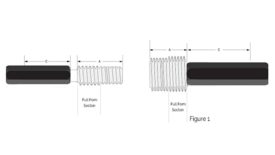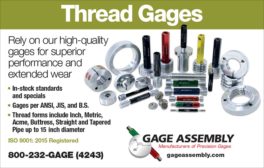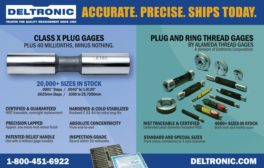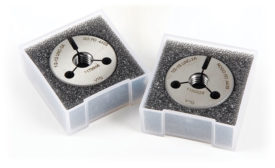Home » thread ring gages
Articles Tagged with ''thread ring gages''
Gaging
Following these steps meticulously will guarantee the ongoing reliability and effectiveness of your thread ring gages.
Read More
Other Dimensions | Hill Cox
Thread Ring Gage Calibration
The basic advantage of the solid thread ring is that it does not have a size adjustment that can be changed.
April 8, 2021
Thread Ring Calibration Confusion
The problem is one that has plagued the industry for some time.
November 20, 2017
Adjustable Thread Ring Gages: Functional External Thread Inspection
Functional external thread inspection
April 1, 2017
It’s That Thread Ring Thing Again
The method shown in the standard will usually be the law.
March 1, 2017
Thread Ring Realities
ANY ONE OF THESE ELEMENTS COULD MEAN A GAGE IS OUT OF TOLERANCE.
October 2, 2015
Stay in the know with Quality’s comprehensive coverage of
the manufacturing and metrology industries.
eNewsletter | Website | eMagazine
JOIN TODAY!Copyright ©2025. All Rights Reserved BNP Media.
Design, CMS, Hosting & Web Development :: ePublishing







